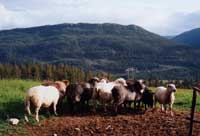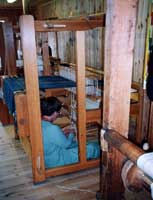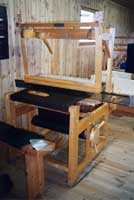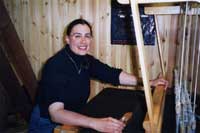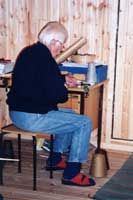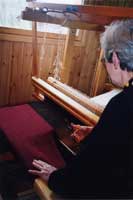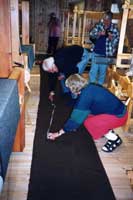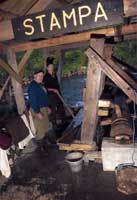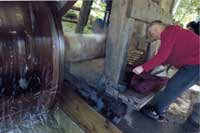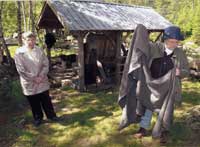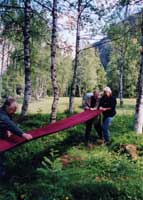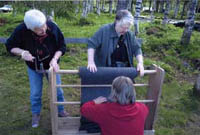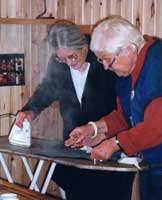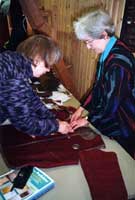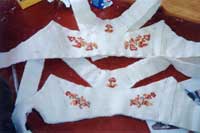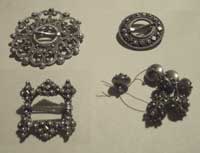These spelsau sheep are part of the flock that Eli and Olav Vesaas raise for both their fleece and for meat. Yarn spun in part from these sheep is used for the vadmel fabric.
Students will arrive to find their looms dressed with the warp color of their choice. During the first few days, class participants will thread and tie up their loom.
Most looms in the weaving studio are counter marche looms. A few may be counter balance looms. Although students should be intermediate weavers, no experience on this style of loom is required.
As the weavers established a rhythm, course leader Ingebjørg Vaagen stepped in to help wind bobbins.
After the weaving is completed, a student cuts off her yardage.
Course leaders Ingebjørg Vaagen and Eli Vesaas help measure the yardage in the center of the weaving studio.
The stampa, located at nearby Mjonøy Handcraft and Cultural Center is run by a water wheel. Course leader Eli Vesaas places the woven cloth in the stampa with warm water and starts to time the process.
Cloth is pulled out of the stampa at regular intervals to check how far along the fulling process has gotten. When the fulling is complete, the 'vadmel' is removed from the stampa and hung up to drip out excess water.
Class members worked together to stretch the damp vadmel in the birch forest near the stampa.
Following the stretching, the vadmel is then carefully rolled in a tight roll to allow the cloth to slowly dry over a period of a few days. The rolls are handled and rerolled by the students to improve the quality of the finished cloth.
Course leader Carol Colburn works with each student individually to help perfect their garments by incorporating both traditional and contemporary construction techniques.
